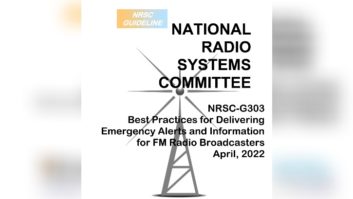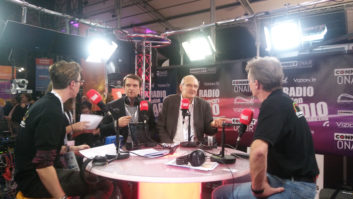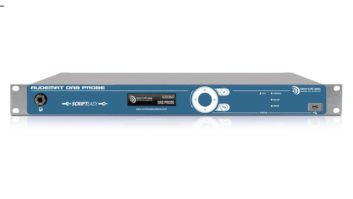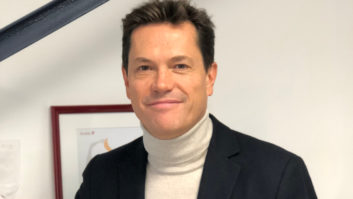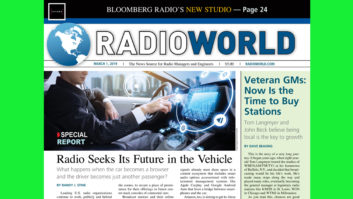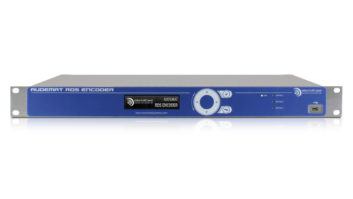GENEVA — Radio Data System technology has been providing FM broadcasters with a robust and reliable data channel, using a digital FM subcarrier, since the 1990s. Since that time, the RDS Forum, an international organization based in Geneva, has maintained and expanded the RDS standard.
In 2016, the RDS Forum proposed the standardization of RDS with RDS2 — backward compatible with three additional subcarriers with the same modulation. The IEC approved the proposal and an updated RDS standard version IEC 62106:2018, which includes RDS2, was published in October 2018.
UPDATED STANDARD
The updated RDS standard was restructured into six parts:
- Part 1: RDS system: Modulation characteristics and baseband coding
- Part 2: RDS message format, coding and definition of RDS features
- Part 3: Coding and registration of Open Data Applications (ODAs)
- Part 4: Registered code tables
- Part 5: Marking of RDS and RDS2 devices
- Part 6: Compilation of technical specifications for ODAs in the public domain
Two additional parts will be added later this year. These are:
- Part 7: RBDS (containing U.S.-specific provisions)
- Part 8: Universal Encoder Communication Protocol (UECP)
To put RDS with RDS2 on air required a new kind of RDS encoder. French company WorldCast Systems commercialized the first model in April 2018. The Audemat RDS encoder began shipping in February 2019. It’s plug-compatible with the firm’s previous model and lets the transmission operator switch on the additional subcarriers when needed. For broadcasters interested in RDS2, this is a future-proof investment. Three additional RDS subcarriers mean more data and thus also more business.

In 2018 the RDS Forum specified a new transmission protocol called RDS2 File Transfer (RFT). This protocol can be used to transfer all kinds of file types up to 163 KB. Applications to be supported can be defined within RDS using the ODA feature.
This tool permits users to add new application features that are totally backward compatible with existing receivers to the RDS system. To decode the new application, existing receivers need to either get a firmware update, which is seldom possible, or a new receiver supporting this feature must be used. The RDS Forum will propose the RFT to be added to Part 2 of the updated RDS standard later this year.
[Read: WorldCast Systems Launches RDS Encoder]
PROGRESS
The RDS Forum held its annual meeting in May 2019 in Glion, Switzerland. The main focus of the meeting was to consider RDS2 use cases for applications of interest to broadcasters. The forum identified the following areas the new public ODAs (openly available and free of IPR) shall support:
- Logo for station identification;
- Slideshow for program related content such as program identification logo and music album cover art, all to be synchronized with the radio program audio;
- Slideshow with information that is a complimentary background to the program such as traffic and weather information in the form of images;
- Breaking news in the form of short headlines;
- Electronic program guide — simple to use such as next and over next item to be broadcast.
Some of these applications are already in an advanced stage of development. For example, Radio France created a live demo on its FIP radio channel during the 2019 European Radio Show in Paris in partnership with WorldCast Systems and Caméon.
To do this, the broadcaster used a specially designed RDS2 prototype portable radio application from Caméon and showed music cover art with a fully synchronized display mode for the music on air. This was a world premiere for achieving this on analog FM radio. Prior to this most people believed it was only possible to do this using digital radio or internet streaming.
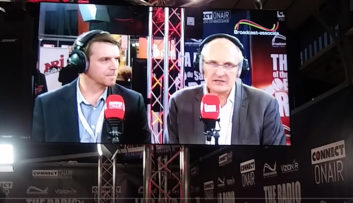
The RFT is optimized for mobile reception. With RDS in the mobile reception mode there will be errors caused by signal fading and multipath distortion, even if it’s possible to repair these issues to a certain extent by using the repetition of the file to be transferred. It’s still necessary to test this with RDS2 signals that are on air for a longer time period. Also, respective regulators must be involved and agree to such tests, as is expected shortly in Hungary and France.
INFORMATION DAY
The RDS Forum occasionally organizes an information day to outline the latest advances on RDS2. This event is separate from our annual RDS Forum. The first one took place in Berlin in 2015 and the second in Paris in 2016.
We also held an informational conference last May in Budapest. Here WorldCast Systems carried out a similar demonstration to the one in Paris using a transmitter from the Budapest University of Technology. During the meeting, it was suggested that the country organize a countrywide RDS2 test transmission with Antenna Hungaria and national regulator NMHH managing RDS2 signal measurements using the Magyar Radio FM network.
Another issue of interest at the meeting was what the deviation on the upper subcarriers should be, say more or less +/-2 kHz per subcarrier. The University of Perugia (Italy) study (Electronic Letters – Volume 55, Issue 11, May 2019, p. 663 – 665: BER-optimal selection of peak frequency deviation for RDS2 by D. Saveri, G. Baruffa, L. Rugini, D.A. Samo and A. Ladanyi) helped clarify this question.
The RDS Forum invites all interested in RDS2 to attend the next RDS2 Info Day conference on Nov. 7 in Bordeaux, France. During the event, we will again demo RDS2 on air in collaboration with Radio France and TDF, WorldCast Systems and Caméon.
Caméon has also announced that it was planning to lead an RDS2 project involving 10 industry partners, mostly from France. This project began in June and will run about 18 months. The goal of this trial is to promote visually augmented smart radios in the car. “Smart” stands for smart service following on FM over to DAB+ and/or over to internet streaming if the program is lost outside the reception area of terrestrial radio.
DECODING RDS
Another topic discussed at the RDS Forum’s annual meeting in May was the availability of integrated circuits to receive and decode RDS2. This matter is more complex than initially thought. It’s true that RDS2 demodulation won’t require significant extra cost since DSP (already used for FM and RDS demodulation) will manage it. Some chips used today may simply require a firmware upgrade to solve the problem. However, firmware development is only interesting for the chip manufacturer if a large quantity of chips is needed for mass manufacturing of receivers. This is not the case at this stage.
At present, all RDS2 test and demo receivers built thus far make use of a USB receiver / data analyzer from the Dutch company MacBe, namely its RX014, which integrates a patched receiver chip from NXP. This product has been commercially available since late 2014.
Dutch-based Catena Radio Design, a company specialized in pre-development of chips for car radio platforms produced by NXP, developed the patch code.
MacBe plans to introduce a new module, the RX019, a small, 2.5 x 3.0 centimeter-circuit board later this year. The RX019 is designed for those who wish to easily carry out an RDS2 prototype or test receiver within their own hardware environment/platform. The module’s functions include FM stereo receiver, RF monitor, RDS monitor, RDS2 monitor and API control via UART.





